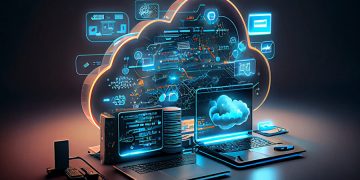Introduction
In the era of artificial intelligence, computing power has become the new electricity. From the training of large language models to the simulation of protein structures, every leap in AI capability has been fueled by an exponential increase in computational resources. Yet, beneath the glossy surface of innovation lies a fundamental truth: without sufficient computing power, intelligence remains potential rather than reality.
1. The Core of Modern AI: Compute as the Foundation
Artificial intelligence, especially deep learning, thrives on three essential pillars — data, algorithms, and compute. While data provides the raw material and algorithms determine how models learn, compute is the driving engine that transforms theoretical designs into functional intelligence.
Every parameter in a neural network requires computation; as models grow from millions to trillions of parameters, the demand for processing power multiplies accordingly. Training GPT-level models now consumes thousands of GPUs running continuously for weeks — a scale unimaginable a decade ago.
2. The Hardware Race: GPUs, TPUs, and Beyond
At the heart of this revolution lies specialized hardware.
GPUs (Graphics Processing Units), originally designed for rendering images, have proven exceptionally efficient for parallel computation, making them the backbone of AI training. Google’s TPUs (Tensor Processing Units) and emerging AI chips from NVIDIA, AMD, and Huawei are pushing performance boundaries even further.
In the near future, quantum accelerators and neuromorphic chips may redefine what “compute” means — replacing traditional binary processing with new architectures that mimic human cognition or exploit quantum mechanics for exponential speed-ups.
3. The Energy Challenge of Infinite Demand
However, with great power comes great energy consumption.
AI computation is notoriously power-hungry. Data centers now account for nearly 2% of global electricity use, and the demand is growing faster than renewable energy production in many regions. The challenge is not only about building more powerful chips but making them sustainable.
Innovations such as liquid cooling, distributed computing, and green energy integration are becoming essential to prevent the AI revolution from turning into an environmental burden.

4. Distributed and Edge Computing: Decentralizing Power
Centralized computing once dominated the digital world, but the next stage is distribution.
Edge computing — processing data closer to where it’s generated — reduces latency, enhances privacy, and lowers bandwidth costs. This trend is particularly relevant for autonomous systems, IoT networks, and real-time AI applications.
In a future smart city, millions of devices — from vehicles to drones to personal assistants — will share computational tasks dynamically, creating a self-organizing mesh of intelligence powered by decentralized compute.
5. The Global Compute Divide
Yet, compute is not equally distributed across the world.
Major AI progress is concentrated in nations and corporations that can afford the massive infrastructure required to train frontier models. This imbalance risks creating a “compute divide,” where access to intelligence and innovation becomes a privilege of the powerful.
Efforts like open-access cloud computing, AI infrastructure democratization, and international collaboration will be crucial to ensure that the benefits of AI extend beyond elite labs and corporations.
6. Looking Ahead: Beyond Moore’s Law
As transistor miniaturization approaches its physical limits, the industry is shifting from pure scaling to architectural innovation.
Future compute will likely rely on hybrid architectures — combining classical, quantum, and biological computation — to meet the ever-growing demand. Compute will no longer be defined by raw speed alone, but by adaptability, efficiency, and intelligence per watt.
Conclusion
Computing power is more than just the engine of artificial intelligence; it is the invisible infrastructure shaping our digital civilization. The next breakthroughs in AI will not only depend on smarter algorithms or larger datasets but on how we redefine and distribute computing itself. In the pursuit of artificial intelligence, compute is not just a resource — it is the essence of progress.












































